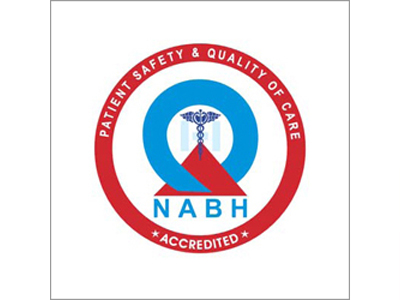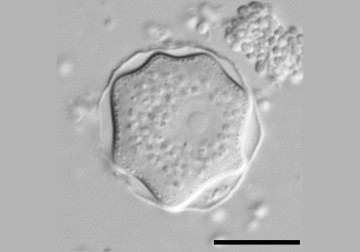In a study from LVPEI, Drs. Gowtham Lakshminarayanan, Savitri Sharma, and Bhupesh Bagga evaluated the in vitro efficacy and safety of the orphan drug miltefosine against Acanthamoeba parasites isolated from patients with keratitis.
Corneas can pick up all sorts of infections, mostly bacterial, but sometimes even viral or fungal pathogens. Acanthamoeba, a genus of soil- and water-dwelling amoeba, can also cause a rare but sight-threatening parasitic infection—Acanthamoeba keratitis (AK)—of this clear, dome-like ocular layer. A. castellanii is the most common infective species. AK is predominantly reported in contact lens users, with poor contact lens hygiene (e.g., using tap water to clean the lenses) being the most common cause for infection. Without prompt treatment, AK becomes a painful and, eventually, blinding condition. Moreover, incomplete treatment can result in Acanthamoeba surviving as dormant cysts, which are difficult to clear and can become active in the future. Around 30-40% of AK patients require corneal transplants. The rest are usually treated with ‘off-label’ topical biguanides, a broad class of antiseptics. However, they are toxic to the ocular surface, leaving behind corneal scars. There is a dire need for an effective topical medication without major side effects.
Miltefosine is an anti-parasitic drug that is believed to be effective against Acanthamoeba, with studies showing that the drug can disrupt the amoeba’s cell membrane structure. In 2016, the US Food and Drug Administration gave oral miltefosine the ‘orphan drug’ status—a medication for treating rare diseases—for AK treatment based on promising results in animal models. However, studies at LVPEI with human patients found that low-concentration miltefosine eye drops were ineffective, possibly because the low concentration was insufficient for humans. It is necessary to first know how effective miltefosine is against Acanthamoeba and what concentration of the drug can be safely used on humans.
In a new study published in the journal Seminars in Ophthalmology, Drs. Gowtham Lakshminarayanan, Savitri Sharma, and Bhupesh Bagga evaluated the in vitro efficacy and safety of miltefosine in AK treatment. Acanthamoeba was isolated from the corneal scrapings of 17 patients diagnosed with AK at LVPEI. The isolated Acanthamoeba—94.11% of which were of the pathogenic T4 genotype—were grown and multiplied in a suspension medium. The cultures were kept in two states, either in active form or as dormant cysts, to evaluate the concentration of miltefosine needed against both. Cultured human corneal epithelial (HCE) cells were used to determine safe doses of the drug.
The minimum dose of miltefosine needed to kill 90% of active Acanthamoeba after a 14-day incubation was found to be 0.125 mg/mL, while the minimum dose needed to kill 90% of cysts was 8 mg/mL. Interestingly, miltefosine is a preventive. ‘Pre-treatment’ of HCE cells with miltefosine prevented A. castellanii infection and the conversion of cysts to an active form. Without the drug, A. castellanii destroyed HCE cells within a day. So, the drug is effective against Acanthamoeba, but how safe is it for the corneal cells? A low concentration (0.0625 mg/mL) of miltefosine was found to be safe for HCE cells (over 80% cell viability) for up to 4 hours. A higher concentration (0.125 mg/mL) was also found to be safe, but only for 15 minutes.
‘Achieving better clinical outcomes in Acanthamoeba keratitis treatment requires the selection of an appropriate therapeutic agent—such as miltefosine—administered at the most effective and safe dose, with well-defined dosing frequency,’ concludes Dr. Gowtham Lakshminarayan, the first author and Research Assistant Scientist at the Dr. Chigurupati Nageswara Rao Ocular Pharmacology Research Centre, LVPEI.
Citation
Gowtham, L., Sharma, S., & Bagga, B. (2025). In Vitro Efficacy of Miltefosine Against Clinical Isolates of Acanthamoeba spp. from Patients with Keratitis. Seminars in Ophthalmology, 1–8. Advance online publication. https://doi.org/10.1080/08820538.2025.2467272



